 W
WThe Pseudocrenilabrinae are a subfamily in the cichlid family of fishes to which, according to a study from 2004, includes all the Middle Eastern and African cichlids with the exception of the unusual Heterochromis multidens and the Malagasy species. This subfamily includes more than 1,100 species. Previous authors recognized additional African subfamilies, e.g. the Tilapiinae of Hoedeman (1947), Tylochrominae of Poll (1986), or Boulengerochrominae of Tawil (2001).
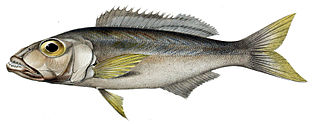 W
WBathybatini is a tribe of cichlids endemic to Lake Tanganyika in Africa. They are mostly found in relatively deep waters and mainly feed on fish or plankton (Trematocara). They are mouthbrooders.
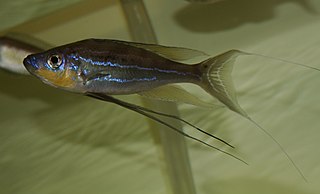 W
WBenthochromis is a small genus of planktivorous cichlid fish that are endemic to relatively deep waters in Lake Tanganyika in Africa.
 W
WChromidotilapiini is a tribe of small cichlids from tropical West and Middle Africa. There are thirteen genera and over fifty described species in this tribe.
 W
WCoptodon is a genus of cichlids native to fresh, brackish and coastal marine waters in Africa with C. zillii also found in the Middle East. It is the only genus in the tribe Coptodonini. Formerly included in Tilapia, this genus and tribe was separated in 2013. Despite the change in genus, Coptodon are still referred to by the common name tilapia. Several species are important in local fisheries and a few are aquacultured.
 W
WCyphotilapia is a small genus of African cichlids endemic to Lake Tanganyika, with C. frontosa being roughly confined to the northern half of the lake and C. gibberosa roughly to the southern half. They have a distinctly banded pattern, bulbous foreheads when mature and can reach up to 33 cm in length.
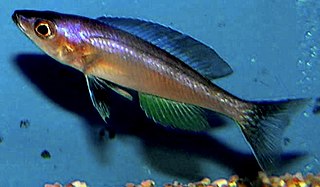 W
WCyprichromini is a tribe of African cichlids, containing seven species in two genera: Cyprichromis and Paracyprichromis. Most species are endemic to Lake Tanganyika; only C. microlepidotus has also been seen in eastern Tanzania.
 W
WEctodini is a tribe of cichlids that are endemic to Lake Tanganyika in East Africa. They live in the benthic zone. Most of the genera in this tribe are monotypic. These fishes show diverse morphology and behaviour and the tribe includes taxa which live in sandy, muddy and rocky habitats.
 W
WEretmodini is a tribe of African cichlids. It contains five species of freshwater fish endemic to Lake Tanganyika. They are small fish with reduced swim bladders that are found near the bottom in the turbulent, coastal surf zone. They are mouthbrooders.
 W
WThe giant cichlid, also known as the emperor cichlid, is a species of fish in the family Cichlidae, endemic to Lake Tanganyika in Africa. It is the only member of its genus Boulengerochromis and tribe Boulengerochromini.
 W
WHemichromini is a tribe of African cichlids. The group consists of 14 species of freshwater fish from two genera: one species in Anomalochromis and the remaining in Hemichromis.
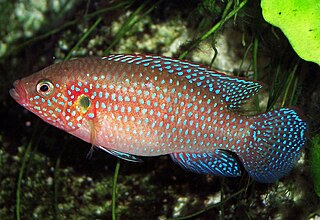 W
WHemichromis is a genus of fishes from the cichlid family, known in the aquarium trade as jewel cichlids. Jewel cichlids are native to Africa. Within West Africa, Hemichromis species are found in creeks, streams, rivers and lakes with a variety of water qualities including brackish water lagoons.
 W
WHeterotilapia is a genus of cichlid fish that are native to rivers from Guinea-Bissau to Liberia in tropical West Africa. Formerly considered a subgenus of Tilapia, in 2013, it was elevated to genus rank. They are medium-large cichlids, up to about 20–30 cm (8–12 in) in standard length depending on the species, and with a distinctive dark-and-light banded pattern. They are substrate spawners and brooders. H. buttikoferi is a common species that also has been introduced outside its native range, but H. cessiana is highly localized and critically endangered.
 W
WHeterotilapia is a genus of cichlid fish that are native to rivers from Guinea-Bissau to Liberia in tropical West Africa. Formerly considered a subgenus of Tilapia, in 2013, it was elevated to genus rank. They are medium-large cichlids, up to about 20–30 cm (8–12 in) in standard length depending on the species, and with a distinctive dark-and-light banded pattern. They are substrate spawners and brooders. H. buttikoferi is a common species that also has been introduced outside its native range, but H. cessiana is highly localized and critically endangered.
 W
WLamprologini is a tribe of African cichlid fishes. It contains seven genera and nearly 100 species. Over half of the species in this tribe are in the large genus Neolamprologus. Most genera in the tribe are endemic to Lake Tanganyika, but one species of Neolamprologus is from the Malagarasi River in Tanzania, and several species of Lamprologus are from the Congo River Basin.
 W
WLimnochromini is a tribe of African cichlids from Lake Tanganyika. They are bi-parental and mouthbrooding fish.
 W
WMbuna is the common name for a large group of African cichlids from Lake Malawi, and are members of the haplochromine family. The name mbuna means "rockfish" in the language of the Tonga people of Malawi. As the name implies, most mbuna are cichlids that live among the piles of rocks and along the rocky shores of Lake Malawi, as opposed to the utaka, cichlids that live in the open water or on sandy shores or soft substrates. Some species of mbuna are highly sexually dimorphic, although many are not. Among biologists, almost all of the cichlid species of Lake Malawi, including mbuna and non mbuna such as the utaka, are believed to have descended from one or a very few species that became isolated in the lake. With rising water levels, new habitats could be colonized and the many isolated rocky outcrops allowed new mbuna species to form. Their striking colors, intriguing behavioral characteristics, and relative hardiness make them very popular despite their unique demands for the home aquarist.
 W
WOreochromini is a tribe of cichlids in the Pseudocrenilabrinae subfamily that is native to Africa and Western Asia, but a few species have been widely introduced to other parts of the world. It was formerly considered to be part of the tribe Tilapini but more recent workers have found that the Tilapini sensu lato is paraphyletic. Despite this change, species in Oreochromini are still referred to by the common name tilapia and some of the most important tilapia in aquaculture —certain species of Oreochromis and Sarotherodon— are part of this tribe. In contrast, several species have small ranges and are seriously threatened; a few are already extinct or possibly extinct.
 W
WPerissodini is a tribe of African cichlids, containing three genera of freshwater fish found only in Lake Tanganyika.
 W
WSteatocranus is a genus of small rheophilic cichlids mostly native to the Congo River Basin in DR Congo/Congo Brazzaville, although one species, S. irvinei, is restricted to the Volta River in Ghana and Burkino Faso, and it belongs in a separate genus. There are also at least c. 10 undescribed species in the Congo River basin awaiting scientific description.
 W
WThe Tilapiini are a tribe within the family Cichlidae commonly known as tilapiine cichlids. Formerly this tribe contained many other genera and species, including the economically important Oreochromis and Sarotherodon, but a taxonomic review found that this grouping was paraphyletic and most were moved to Coelotilapini, Coptodonini, Heterotilapini, Oreochromini and Pelmatolapiini. Together, most species in these tribes are called "tilapias". In a more distant past, a number of other, more different genera like Steatocranus also were included in Tilapiini. With these as separate, Tilapiini now is a much more restricted tribe with only three genera and about half a dozen species from Central and Southern Africa.
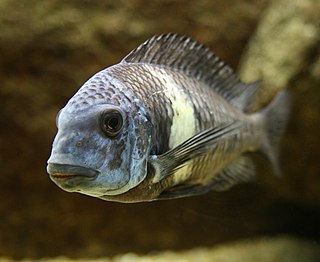 W
WTropheini is a tribe of African cichlids, endemic to Lake Tanganyika. The species in this tribe are mouthbrooders.
 W
WTylochromis is a genus of African fishes in the family Cichlidae. They are the only members of the tribe Tylochromini. Many of the species are endemic to the Congo River Basin, but species also are found in Lake Tanganyika, Cameroon, Nigeria, and West Africa from Ghana to Gambia.